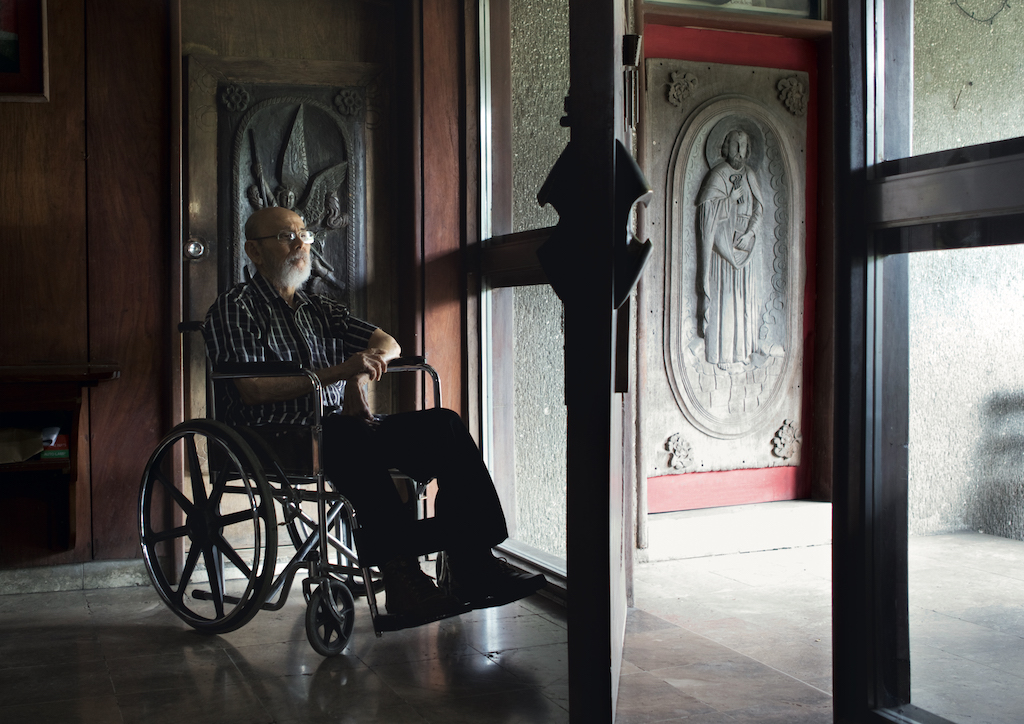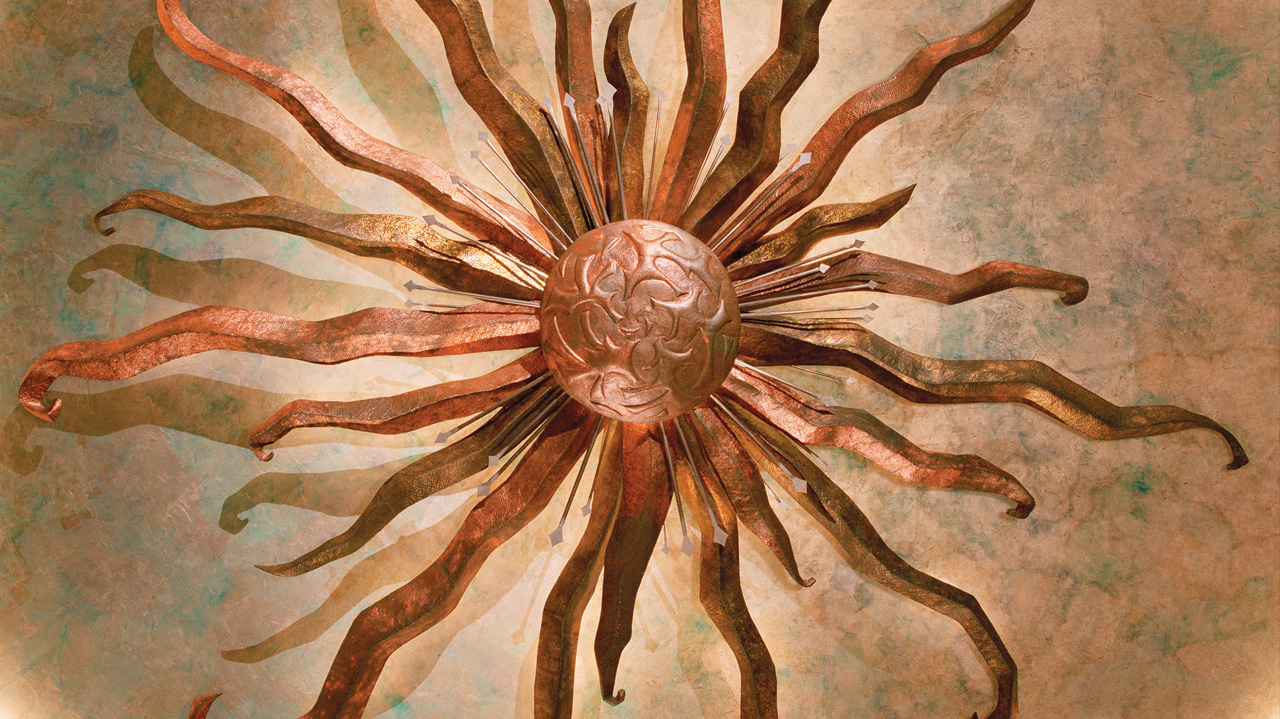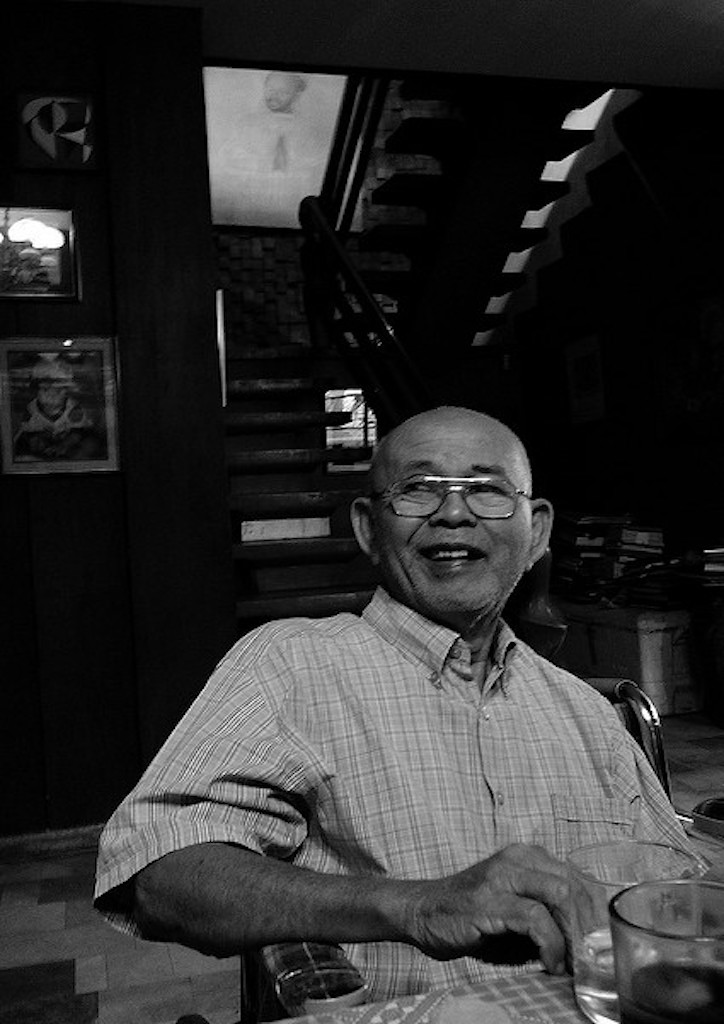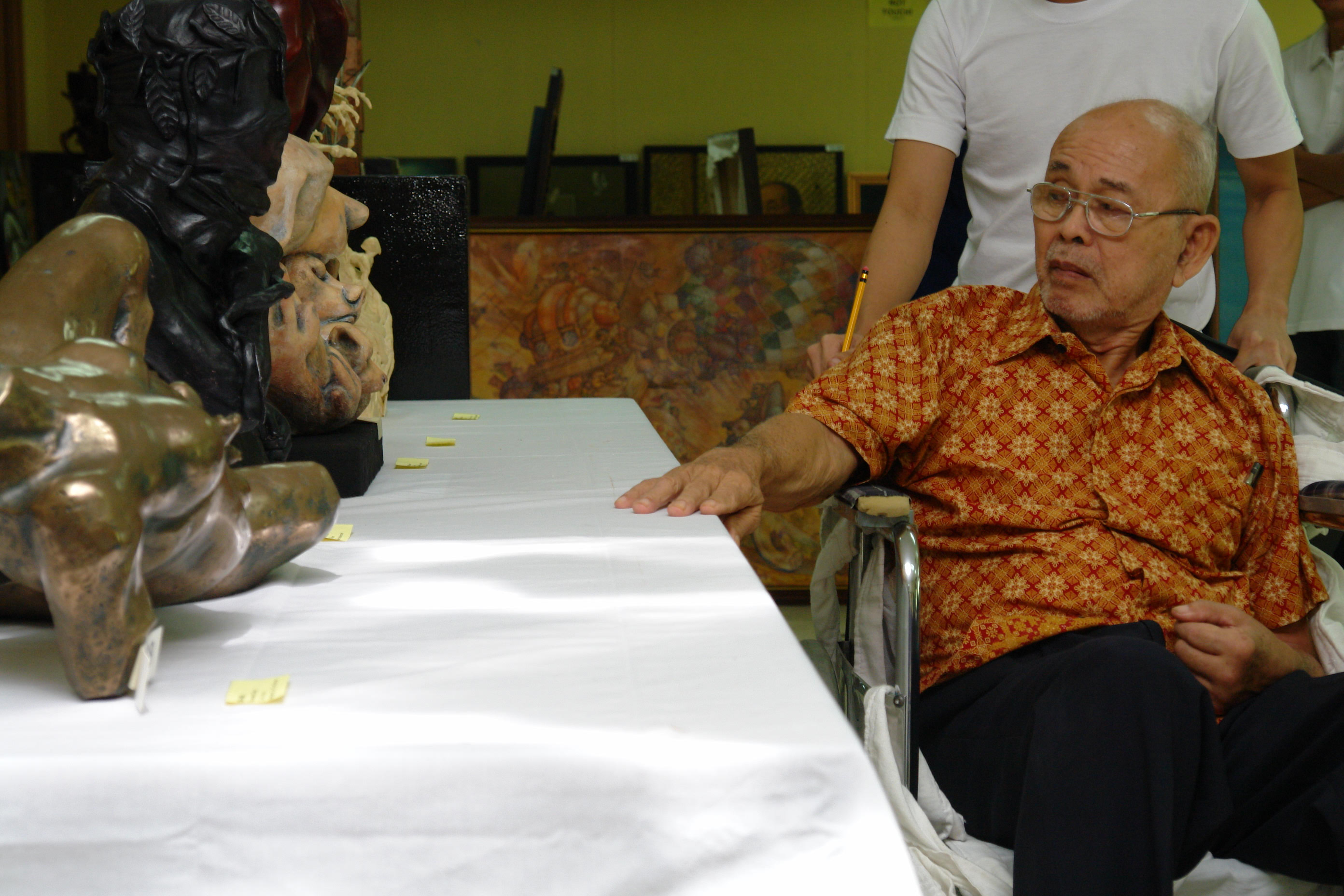National Artist for Sculpture Napoleon Abueva made catapults to send flowers in the air, turned a crane into a lodging, which he called a bird house, and was not beyond apologizing to a student for raising his voice.

It was many years ago since the visit to Napoleon Abueva’s house but impressions from that afternoon are not difficult to recall. The home he shared with his psychiatrist wife, Dr. Cherry was arguably a physical expression of his mind. The rooms in the Abueva house were still distinguishable for the purpose of living, with a dining area and what might be the living room. Objects piled on chairs and surfaces, that might have been tables and cabinets, cramped the area. The floor disappeared into a cavity that was half a swimming pool inside the residence; the rest of it stretched out outside. It seemed destined for other than swimming with more objects of various sizes, shapes and material lying inert where water should have been.
There was a sense of continuing conundrum as the house extended to the workshop, which was semi-outdoors. It recalled a yard where fragments of industrial or architectural debris were stored. What others might have dismissed the things as junk, National Artist for Sculpture Abueva was seeing rose catapults, swinging houses, pendulums and works conceived from creative imaginings.

Charioteer of Fine Arts
The sculpture of Napoleon Abueva had established his artistry and preeminence in Philippine art. The youngest recipient of the National Artist Award at 46 years old, he is also known as the Father of Modern Sculpture. While the accolades were impressive, the man himself was even more.
He was a professor at the University of the Philippines when I was a freshman. Family members who were up alumni shared stories of the former dean of the College of Fine Arts, who arrived for his classes in a chariot he had made, drawn by a horse. While I had not taken any units in his class, we connected in the corridors of the third floor above the U.P. Library, where the art classes were held. He was kindly, approachable and real. Billy, as he was known to his friends and colleagues, might have seemed stern except for the eyes that twinkled like that of a child who was up to something. When he broke out into a smile, his face was an image of kindness.
A fellow student recounted her experience in one of his classes. He seemed in less than happy spirits that morning and in a fit of impatience, called her down gruffly. It remains blurred by memory whether it was for her behavior or the quality of her work that he castigated her, but she was embarrassed to have been singled out by his raised voice that the entire class had heard. However, before the class was over, he approached her and apologized. Billy Abueva’s humility was more impressive to me than all the distinctions appended to his name.

Catapulting Roses in the Air
His creative genius had a playful mien captured in some of his works. A crane he had used for one large scale sculpture was transformed into the main post of a what he called The Birdhouse. An art student made it her residence for a while. Another place Billy built in his backyard was a swinging house, several feet elevated from the ground. He conducted a tour of the unit during that visit years ago and switched on the mechanism that had the structure adulating like a ship at sea.
Back on the ground in his workshop, he turned on the power that set the piece he was working on into motion. It rotated like a Ferris Wheel, accidentally hitting him not too gently on the head. He recovered momentarily, flashed that childlike smile and led the way inside to show another of his inventions.
Somewhere in the confusion of things that lay around, he produced what he called a rose catapult. Like a child showing off a new toy, the National Artist explained where to put a rose and how to launch it in the air towards a recipient. It was an eccentric, romantic way to offer flowers, which he did for me that morning in his home.

The Face of Humility
Years later, I invited him to be the guest of honor at the opening of an exhibit I was curating. It was a small gallery that specialized in photographic art. He accepted the invitation immediately and arrived on time. Despite his stature, there was nary a trace of self-importance. He viewed the works of Butch Umali, mingled with the guests, and chose the photo of a child with a rose to add to his collection. Payment for the work was refused; it was the photographer’s privilege to be part of Billy’s acquisitions.
The National Artist was given to supporting talent and it was on the occasion of a Metrobank art event that we met again after a considerable length of time. He had not changed, only aged, and lent himself to the task of selecting the winners of the national Metrobank Arts and Design Excellence competition. He did this a few times as chairman of the panel of judges. When health challenges relegated him to a wheel chair, he still attended the M.A.D.E awards night with his wife. His presence always added to the event and inspired young artists embarking on a career in the field he had distinguished himself. I was personally pleased to see him, happy to be in the presence of a kind soul who was both talented and generous with himself.
Many accounts have already been written about his accomplishments, which are important to the development and international recognition of art in the Philippines. Personally, beyond admiration for his creativity and artistry, it is the goodness of this gifted person that leaves the most lasting impression and sets him apart from the many talented artists in the country. It made him truly exceptional in my book.
—
by Anna Isabel C. Sobrepeña





